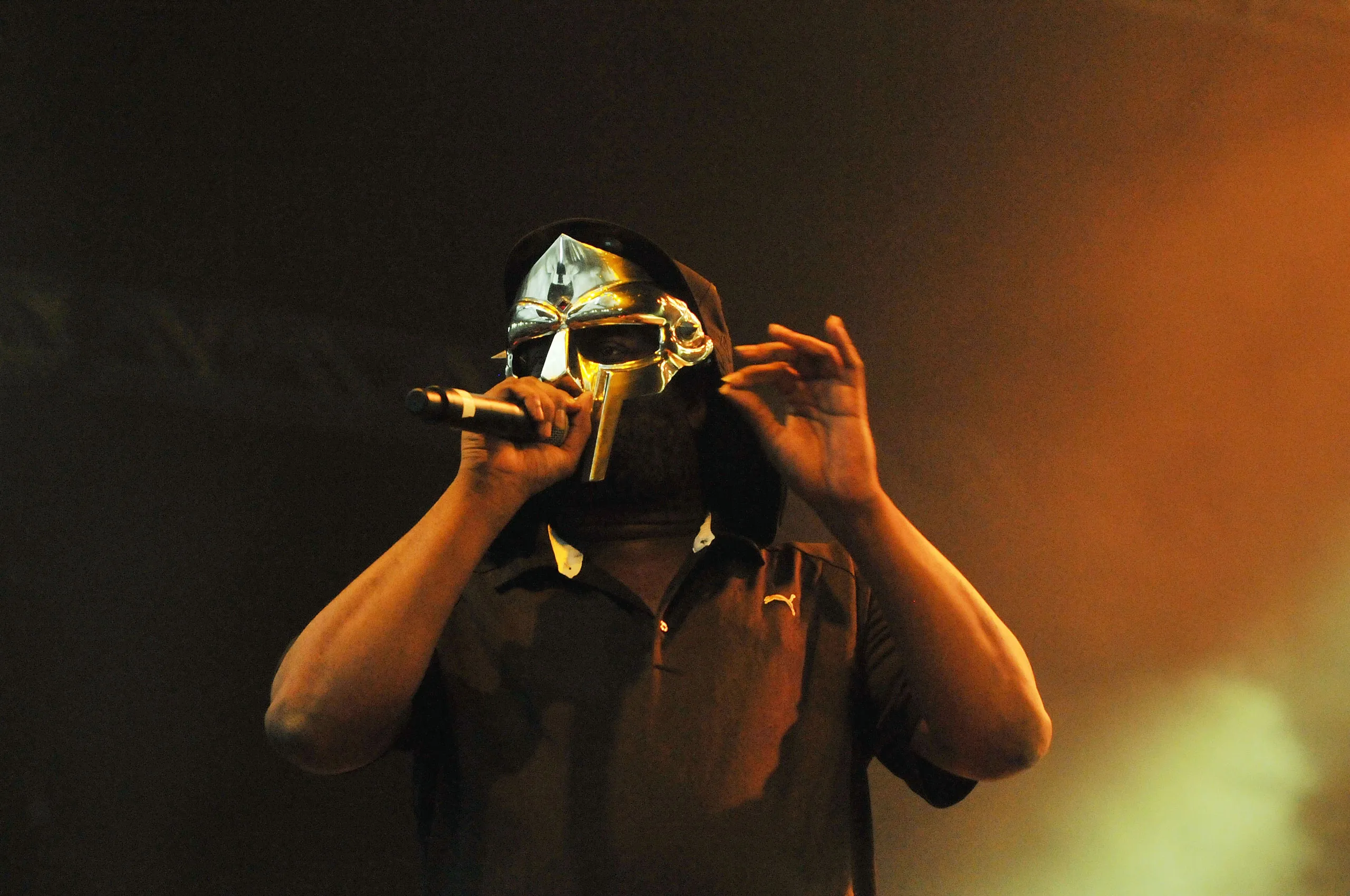MF DOOM cause of death is still unknown. The enigmatic and influential rapper, passed away on October 31, 2020, leaving the hip-hop community and fans worldwide mourning his loss. While news of his death was not made public until December 31, 2020, the MF DOOM Cause Of Death remained a mystery for several months. Speculation about the MF DOOM Cause Of Death was rampant, with some rumours suggesting it was due to a heroin overdose. However, on January 4, 2021, his family confirmed that MF DOOM had passed away from natural causes. This article will explore the circumstances surrounding MF DOOM’s death, including his career and legacy in the hip-hop industry, and provide a comprehensive overview of the cause of his untimely demise.
Who is MF DOOM?
MF DOOM, born Daniel Dumile, was an American rapper and record producer. He was known for his unique and intricate rhyme schemes, his use of comic book and science fiction imagery, and his distinctive masked persona.
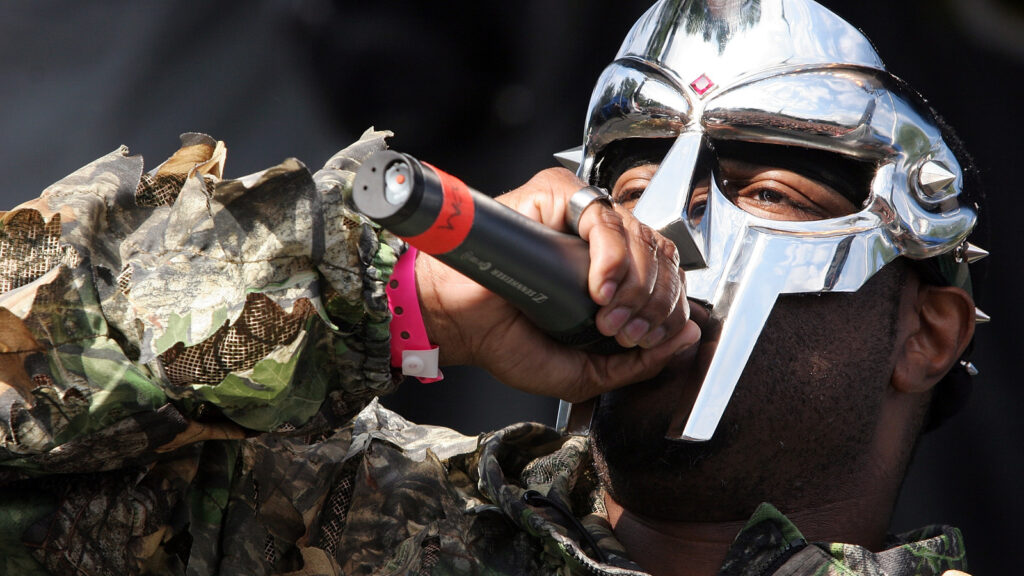
Dumile began his music career in the late 1980s as a member of the rap group KMD, which he formed with his younger brother. After KMD disbanded in the early 1990s, Dumile retreated from the music industry and later adopted the persona of MF DOOM. He released his debut solo album, “Operation: Doomsday,” in 1999 to critical acclaim.
Throughout his career, MF DOOM released numerous solo albums, collaborative projects, and instrumental projects. He worked with various artists across different genres, including Madlib, Danger Mouse, Ghostface Killah, and Thom Yorke. His music has been highly influential and has inspired many artists in the hip-hop and alternative music scenes.
The Profession of MF Doom
MF DOOM, Daniel Dumile, was a professional rapper and record producer. He began his music career in the late 1980s as a member of the rap group KMD, which he formed with his younger brother. After KMD disbanded in the early 1990s, Dumile adopted the persona of MF DOOM and began his solo career.
MF DOOM released his debut solo album, “Operation: Doomsday,” in 1999 to critical acclaim. He released numerous solo albums, collaborative projects, and instrumental projects throughout his career. He worked with a wide range of artists across different genres, including Madlib, Danger Mouse, Ghostface Killah, and Thom Yorke.
In addition to his music career, MF DOOM was a visual artist and created artwork for many of his album covers. He was also known for his distinctive masked persona, which he adopted early in his solo career and wore during live performances and public appearances.
His face
MF DOOM was known for wearing a mask that covered his face during live performances and public appearances. The mask was inspired by a Marvel Comics villain named Doctor Doom and was meant to add to the mysterious and enigmatic persona that he cultivated as an artist.
The specific design of the mask evolved over the years, but it generally featured a metal faceplate with slits for the eyes and a stylized “MF” logo. MF DOOM’s decision to conceal his face with a mask was a deliberate artistic choice and contributed to his unique image as a rapper and producer.
Why did MF DOOM use to wear a mask?
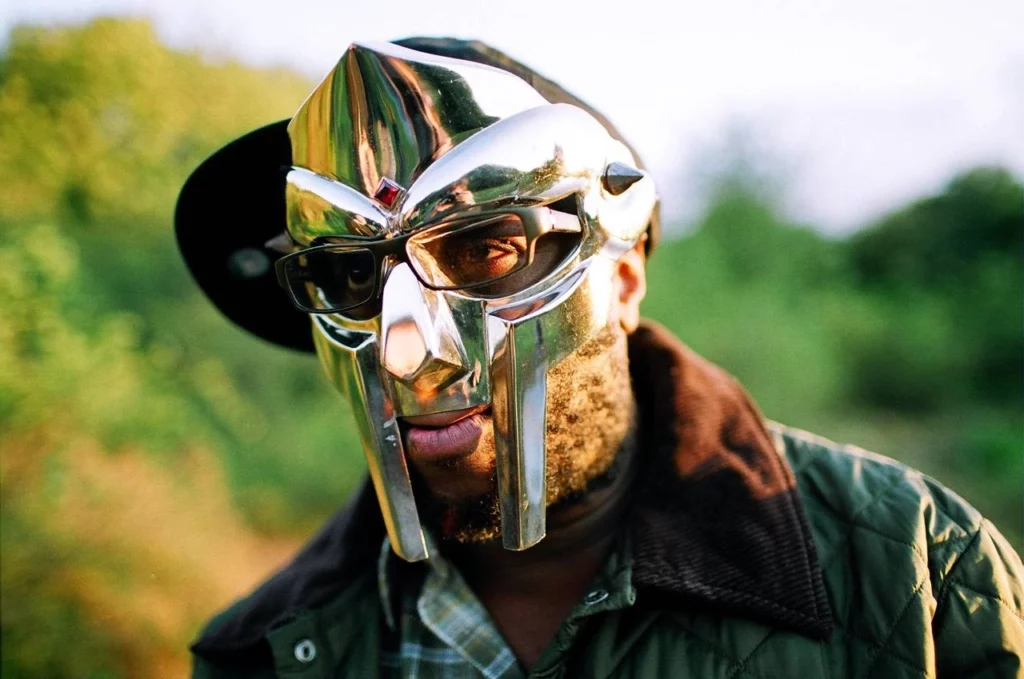
MF DOOM used to wear a mask as part of his stage persona and brand. He adopted the mask early in his career after a personal tragedy involving his brother and fellow band member, DJ Subroc, being killed in a car accident. The mask allowed him to separate his personal life from his musical persona and create an alter ego that embodied his artistic vision.
The mask also added an element of mystery and intrigue to his performances and helped him stand out in a crowded industry. Additionally, the mask allowed MF DOOM to maintain his privacy and control his public image while still being able to express himself creatively.
His family and relatives

MF DOOM
MF DOOM

MF DOOM, also known as Daniel Dumile, had a wife named Jasmine and several children. He was a very private person and did not often share details about his personal life, including information about his family and relatives. However, it is known that he had a brother named Subroc, who was also a member of KMD, the rap group that Dumile was in before he adopted the MF DOOM persona. Subroc passed away in 1993, a significant event in Dumile’s life and may have influenced the themes and tone of his music in subsequent years.
His legacies
MF DOOM’s legacy as a rapper and producer is significant and far-reaching. He was widely regarded as one of the most innovative and influential artists of his time, and his music has had a lasting impact on hip-hop and alternative music scenes.
One of MF DOOM’s most significant legacies is his approach to lyricism. He was known for his intricate and complex rhyme schemes, his use of wordplay and metaphors, and his ability to tell compelling stories through his music. His style was highly innovative and influential, inspiring many other artists to push the boundaries of what was possible in hip-hop.
MF DOOM was also known for his creative use of sampling and his ability to blend different genres and styles of music. He worked with a wide range of artists across various genres, including Madlib, Danger Mouse, Ghostface Killah, and Thom Yorke, and his collaborations helped to bridge the gap between hip-hop and other forms of music.
Finally, MF DOOM’s legacy is also tied to his distinctive persona and his use of imagery drawn from comic books and science fiction. His adoption of the masked persona of MF DOOM helped create a sense of mystery and enigma around his music, adding to the importance of otherworldliness that was often present in his lyrics and visuals. Overall, MF DOOM’s legacy is one of creativity, innovation, and pushing the boundaries of what was possible in hip-hop and beyond.
Career details
MF DOOM’s music career spanned several decades; he released numerous albums, collaborations, and instrumental projects. Here are some details about his career:
MF DOOM began his music career in the late 1980s as a member of the rap group KMD, which he formed with his younger brother. KMD released two albums before they were dropped from their record label and disbanded after Dumile’s brother’s death.
After a period of seclusion, Dumile adopted the persona of MF DOOM and began his solo career. He released his debut solo album, “Operation: Doomsday,” in 1999, which was widely acclaimed for its innovative lyrics and production.
MF DOOM released several critically acclaimed albums in the following years, including “Mm.. Food,” “Madvillainy” (a collaboration with producer Madlib), and “The Mouse and the Mask” (a collaboration with the hip-hop duo Danger Doom).
MF DOOM was known for his creative use of sampling and his ability to blend different genres and styles of music. He worked with a wide range of artists across various genres, including Ghostface Killah, Thom Yorke, and Gorillaz.
MF DOOM was also a visual artist and created artwork for many of his album covers. He was known for his distinctive masked persona, which he adopted early in his solo career and wore during live performances and public appearances.
In addition to his solo work, MF DOOM was a member of several rap groups, including Monsta Island Czars and JJ Doom.
Sadly, MF DOOM passed away on October 31, 2020, leaving a significant legacy in hip-hop and alternative music.
MF DOOM Cause Of Death
MF DOOM Cause Of Death has not been officially announced by his family or representatives. However, in December 2020, his wife Jasmine released a statement on Instagram revealing that MF DOOM had passed away on October 31, 2020. She did not disclose the cause of his death, but she expressed gratitude for the outpouring of support from his fans and requested privacy for herself and their family. As of now, the exact MF DOOM Cause Of Death remains unknown.
One potential MF DOOM Cause Of Death is a heroin overdose, although no official statement has been made regarding the specific circumstances of his passing. Suicide or foul play have been ruled out as contributing factors. Born in Britain, MF DOOM spent much of his childhood in Long Island, New York, after relocating there with his family at a young age. He first entered the music industry in 1988 as a member of KMD, a band he formed with his brother. The group disbanded in 1993 following the tragic loss of DJ Subroc, Dumile’s brother.
Famous raps of MF Doom
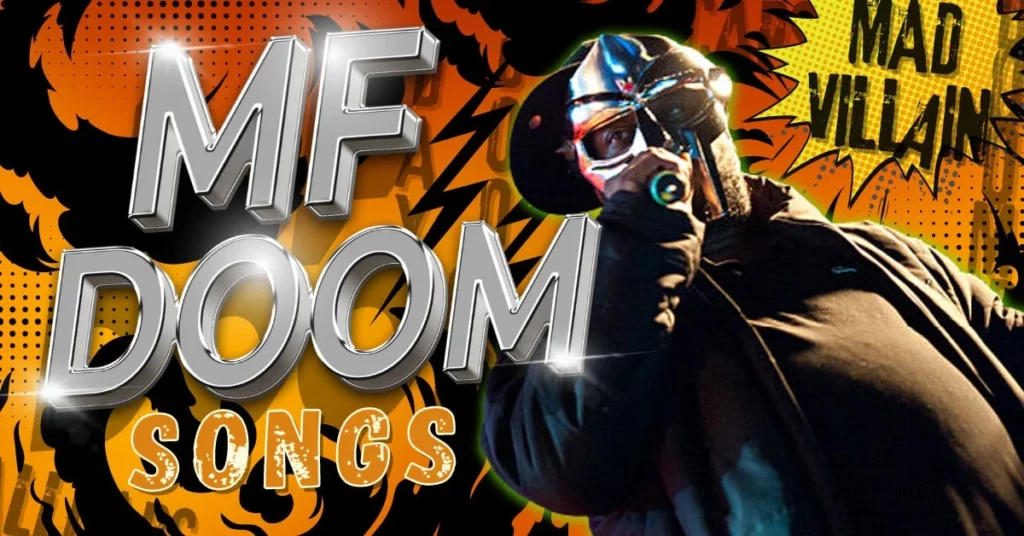
MF DOOM was known for his intricate wordplay and storytelling ability and had many memorable verses and songs throughout his career. Here are some of his most famous raps:
“Accordion”
This track from the “Madvillainy” album features DOOM’s trademark flow and wordplay over a jazzy beat. Lines like “Living off borrowed time, the clock tick faster” and “It’s like the work of Stevie Wonder’s glasses” have become iconic in hip-hop.
“Rhinestone Cowboy”
This track from the “Mm.. Food” album is a tribute to the late rapper Tupac Shakur and features DOOM’s clever lyrics and multisyllabic rhymes over a laid-back beat.
“Beef Rap”
This song from the “Mm.. Food” album is a playful take on the world of beef in hip-hop, with DOOM rapping about everything from tofu to beef jerky. The line “I’m like a veggie burger with the lot” has become a classic example of DOOM’s witty wordplay.
“ALL CAPS”
This track from the “Madvillainy” album features DOOM and Madlib trading verses over a funky beat. The chorus, “ALL CAPS when you spell the man’s name,” has become one of DOOM’s most famous lines.
“Doomsday”
This track from the “Operation: Doomsday” album is a classic example of DOOM’s storytelling ability, with the rapper recounting his struggles and triumphs over a soulful beat.
“Figaro”
This track from the “Madvillainy” album is a masterclass in wordplay, with DOOM rapping over a hypnotic beat about everything from chess moves to the Illuminati.
“Great Day”
This song from the “Mm.. Food” album is a feel-good track with a catchy chorus and memorable verses from DOOM, including the line “It ain’t nuttin’ like a fistful of cash or a blissful bowl of hash”.
“One Beer”
This track from the “Mm.. Food” album is a humorous take on the dangers of alcohol consumption, with DOOM rapping over a funky beat about getting drunk and losing his keys.
“Rhymes Like Dimes”
This track from the “Operation: Doomsday” album features DOOM trading verses with fellow underground rapper and collaborator DJ Cucumber Slice over a classic boom-bap beat.
“Gazillion Ear”
This track from the “Born Like This” album is a dark, hypnotic banger with DOOM’s signature flow and intricate rhymes, including the line “Villain get the money like curls / They just trying to get a nut like squirrels in his mad world”.
“Hoe Cakes”
This track from the “Mm.. Food” album is a playful take on the theme of gold-digging women, with DOOM’s clever lyrics and multisyllabic rhymes over a funky beat.
“Vomitspit”
This track from the “Mm.. Food” album is a fast-paced banger with DOOM’s intricate wordplay and memorable lines like “Rap snitches, telling all their business / Sit in the court and be their star witness”.
“Accordion”
This track from the “Madvillainy” album stands out, with DOOM’s trademark flow and storytelling ability over a jazzy beat.
“Beef Rapp”
This song from the “Mm.. Food” album is a clever take on beef in hip-hop, with DOOM rapping everything from tofu to beef jerky.
“All Outta Ale”
This track from the “Operation: Doomsday” album is a laid-back track with DOOM’s signature flow and witty lyrics, including the line, “I told her no offence, she probably gets the same line from Common Sense”.
MF doom Albums
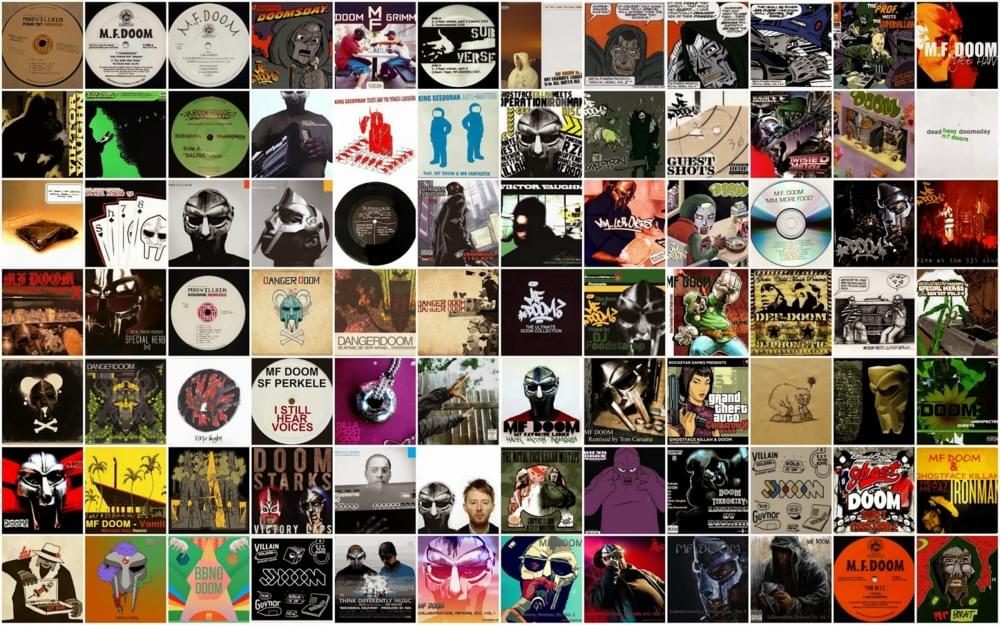
MF DOOM released a number of solo albums and collaborations throughout his career, some of which include:
“Operation: Doomsday” (1999)
DOOM’s debut solo album, featuring classic tracks like “Doomsday” and “Rhymes Like Dimes”.
“Take Me to Your Leader” (2003)
An album from DOOM’s group, King Geedorah, featuring DOOM as a producer and rapper.
“Mm.. Food” (2004)
A concept album with food-themed tracks and DOOM’s signature wit and humour.
“Madvillainy” (2004)
A collaboration with producer Madlib, considered by many to be a masterpiece of underground hip-hop.
“Born Like This” (2009)
DOOM’s final solo album before his death, featuring collaborations with artists like Raekwon and Ghostface Killah.
“NehruvianDoom” (2014)
A collaboration with rapper Bishop Nehru, with DOOM as a producer and rapper.
MF Doom awards
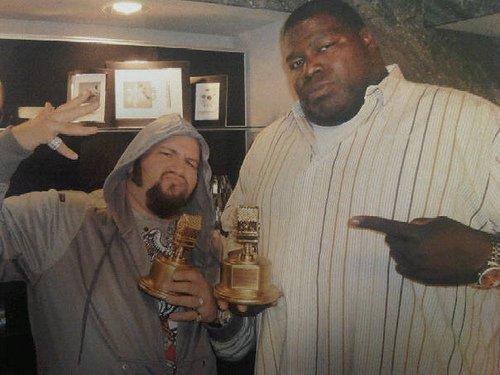
While MF DOOM was widely acclaimed and respected in the underground hip-hop scene, he did not receive many mainstream awards during his career. However, he was recognized by critics and fans for his innovative and influential contributions to the genre. Some of the notable recognition he received include:
“Madvillainy” was named one of the top albums of 2004 by several publications, including Rolling Stone and Pitchfork.
DOOM was included on several “greatest MCs of all time” lists, including a ranking by MTV that placed him at #15 in 2006.
In 2011, Complex named DOOM one of the “50 greatest storytellers in hip-hop“.
In 2015, DOOM was awarded the “Metal Face Legend” award by the website Consequence of Sound, recognizing his influence and impact on hip-hop.
Some Frequently Asked Questions(FAQs)
Has MF DOOM won a Grammy?
No, MF DOOM did not win a Grammy during his career. Despite being widely acclaimed and influential in the underground hip-hop scene, he did not achieve mainstream success or recognition to that extent.
Is MF DOOM better than Eminem?
This is subjective and open to personal interpretation. Both artists are highly respected and influential in hip-hop, but their styles and approaches differ. It’s up to individual listeners to decide which they prefer.
Was MF DOOM one of the best?
MF DOOM is widely regarded as one of the most innovative and influential artists in the underground hip-hop scene. He was known for his unique style, complex lyrics, and innovative production techniques, and he profoundly impacted the genre.
Is MF DOOM royalty-free?
No, MF DOOM’s music is not royalty-free. As a professional musician, DOOM’s music is subject to copyright laws, and any use of his music without permission or proper licensing could result in legal action.
How much-unreleased music does MF DOOM have?
It is unclear exactly how much unreleased music MF DOOM had at his death. However, he was known to be a prolific artist who often recorded and produced music on his terms, so there may still be a significant amount of unreleased material that may be released posthumously.
What is the most underrated MF DOOM song?
It varies depending on individual taste. Some fans and critics consider tracks like “Gas Drawls” or “Deep Fried Frenz” some of DOOM’s most underrated songs.
What rappers are fans of MF DOOM?
MF DOOM has been praised and admired by many fellow hip-hop artists, including Kendrick Lamar, Tyler, The Creator, Earl Sweatshirt, and many others.
What type of rap is DOOM?
MF DOOM’s music is often categorized as “underground” or “alternative” hip-hop. He was known for his complex and inventive lyrics, intricate rhyme schemes, and unconventional production techniques.
Why is MF DOOM the villain of hip-hop?
MF DOOM adopted a villainous persona in his music, often referring to himself as “Metal Face” or “The Supervillain”. This persona was inspired by classic comic book villains and reflected DOOM’s outsider status within the music industry.
How influential was MF DOOM?
MF DOOM significantly influenced the underground hip-hop scene and has been cited as an inspiration by many artists. His unique style and approach to production and lyricism helped to expand the boundaries of hip-hop and pave the way for future innovators.
Conclusion
In conclusion, MF DOOM Cause Of Death has been officially confirmed as natural reasons. While some speculation suggested a possible heroin overdose, it has been refuted by his family. MF DOOM leaves a legacy as one of the most innovative and influential rappers in the hip-hop industry. Throughout his career, he was known for his unique flow, wordplay, and villainous persona. His music inspires and influences generations of hip-hop artists and fans. Thank you for reading this article; we hope you like the information given in the article.
Read More: MF DOOM Cause Of Death Revealed…Related Articles
- What is Luh Tyler’s Age, Height, Weight, Family, Net Worth, and Biography in 2024
- Andre Hakkak House: Where Modern Design Meets Luxury Living
- Tyrus Net Worth: Exploring George Murdoch’s Financial Journey
- Jody Morrill Wolcott: Celebrating the Life and Legacy of Johnny Carson’s First Wife
- Julie Lauren Curtis: A Journey Through Life, Love, and Legacy
- The Age of SZA’s Daughter: Unraveling the Mystery of Her Personal Life
- Emma Cannon: The Quiet Force Behind Machine Gun Kelly’s Success
- Korina Harrison: A Private Journey Through Fame and Independence
- Tyna Karageorge: A Tale of Custody, Conflict, and Courage
- Beatrice Milly McCartney: Carving Her Own Path Away from Fame
- Jami Gertz Net Worth: How the Actress Built a $8 Billion Fortune
- Margie Washichek: A Journey of Independence and Resilience
- 4ffe1yy5ymq= Adriana Lima: The Enduring Influence of a Runway Legend
- Diana Nyad and Bart Springtime: An Excursion of Love and Accomplishment
- Drew Brees’ NBC Debut: A Fresh Face in Sports Broadcasting
- Dhamaka Zone Exposed: The Pulse of Celebrity Gossip
- Rick Moranis’ Net Worth: How the Actor Built His Fortune
- Casey Anthony’s Net Worth: A Closer Look at Her Finances
- Katt Williams’ Net Worth: Inside the Life of the Comedian and Actor
- Kevin Von Erich Net Worth: Inside the Wrestling Legend’s Wealth and Career

